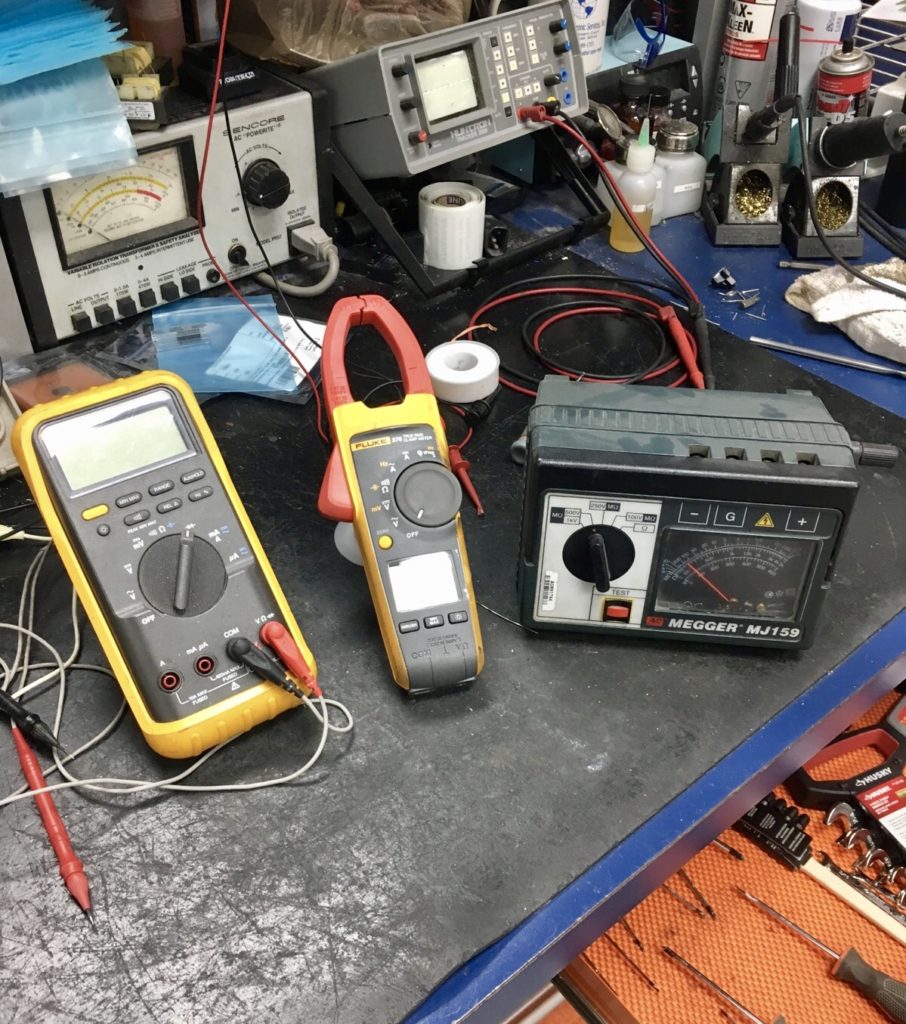As an industrial electronics repair service center that assists customers all over the world – we are often called to help customers with troubleshooting problems over the phone. With communication technology improving the way we interact remotely using apps such as Skype and Facetime, this has become easier than ever. However, one hurdle we encounter on a consistent basis, is that sometimes the measurements and checks we need cannot be done simply because the customer lacks the appropriate equipment. This is why we have made this checklist of 3 basic pieces of instrumentation that every maintenance crew should have and why. Of course, be SURE that whomever is operating the equipment has the proper training and follows the correct safety procedures when interacting with electricity.
Multimeter
A multimeter is the number one instrument needed to get you started and the first thing a tech would ask you to pull out when troubleshooting. With it you can measure voltage, resistance current, capacitance and even frequency. For example, you could find shorts within the output of a variable frequency drive by taking measurements across the input and output terminals using the meter in diode mode. Or find a blown fuse by measuring the Ohm value placing the meter probes on either end of the fuse. In electronics, a good reliable multimeter is invaluable in fault finding within a circuit.
Megohmmeter
A megohmmeter, sometimes called megger, is a special type of ohmmeter that measures the resistance of electrical insulation. The megger works by introducing a high amount of DC voltage at very low currents to the circuit and measuring any voltage leakage present to determine any isolation breakdown. The reason we like customers to keep one of these on hand is for checking motors that may have compromised motor windings but this tool can also be useful in checking coils, transformers and cabling.
Clamp Meter
A clamp meter is very similar to a multimeter but with one major difference. Rather than having to apply the sensing probes to the conductor directly, a clamp meter allows the user to place the clamp around the wire to measure current passing through it. This allows personnel to take measurements safely while the power of a unit is on.
So there you have it. Some tools to get you started troubleshooting electronics in your facility. Be sure to visit us online at www.gesrepair.com or call us at 1-877-249-1701 to learn more about our services. We’re proud to offer Surplus, Complete Repair and Maintenance on all types of Industrial Electronics, Servo Motors, AC and DC Motors, Hydraulics and Pneumatics. Please subscribe to our YouTube page and Like Us on Facebook! Thank you!
